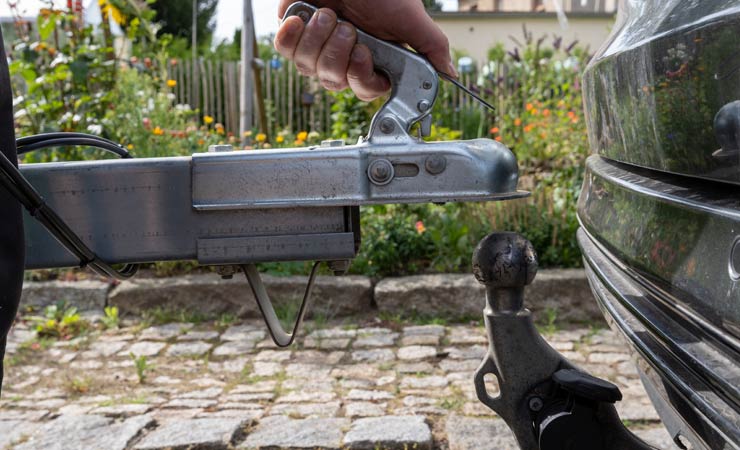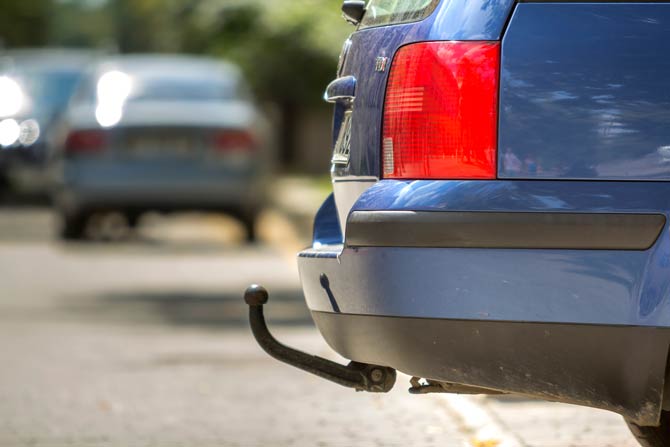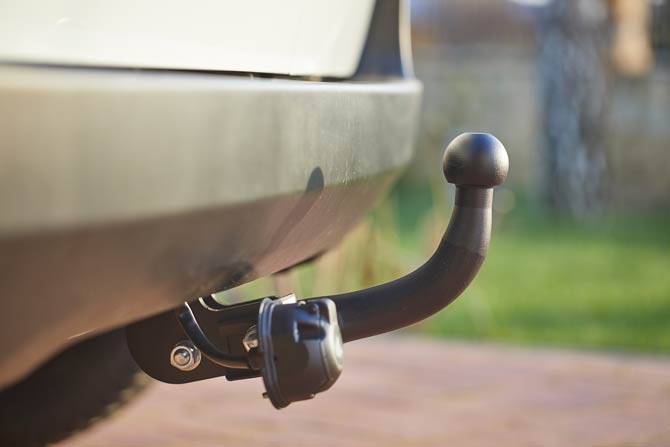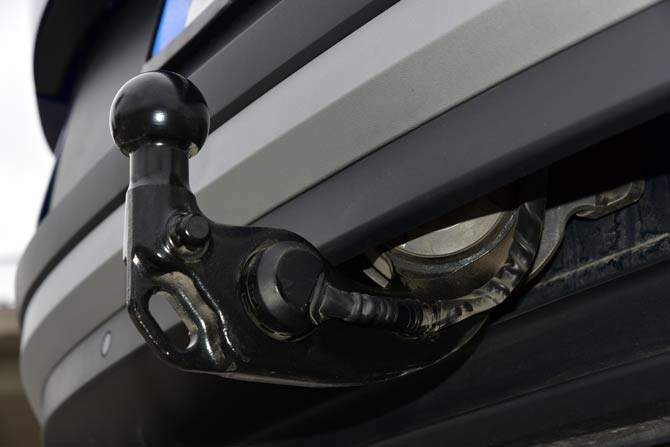
With a trailer hitch, drivers can transport larger loads with their vehicle. However, if the practical hook is not attached to your vehicle at the factory, the components are available from vehicle dealers as extras for retrofitting.
Types of trailer hitches
Rigid trailer couplings are ideal for continuous use. Companies or frequent travelers often choose this option. The rigid models are particularly suitable for vehicle owners who want to retrofit a trailer hitch and do not want to invest a lot of money for this purpose.
With this option it is common for the trailer coupling including the ball head to be connected to a welded or screwed ball rod.
A rigid construction occurs when the couplings are firmly attached to the mounting cross members using the ball head device. The trailer couplings are not removable. In contrast, removable towbars are the optimal solution for anyone who only wants to use a towbar occasionally. With these models it only takes a few steps to remove the accessories when not in use. The original appearance of the vehicles is thus preserved.

Special features of a swiveling trailer hitch
Pivoting trailer hitches are practical, elegant and inconspicuous at the same time. These options allow the hitches to rotate under bumpers.
This means the components are ready for use within a short period of time. Pivoting trailer hitches are therefore an optimal solution for all vehicle owners who often want to use the feature spontaneously. However, a combination of the system is not possible with all cars.


Retrofitting a trailer hitch: What are the costs?
The design and the trailer coupling determine the amount of material costs. Another important component is the load that the trailer hitch is supposed to move. Prices for trailer hitches vary between 200 and 600 euros. However, experience shows that rigid models are cheaper than removable options. The costs increase by another 100 euros for the required electrical kit. There are also labor costs for retrofitting in the workshop.
The effort required for installation depends on the trailer hitch and the vehicle model.
For this assembly, vehicle owners have to calculate an hourly wage of between 70 and 120 euros. Experience has shown that installing a trailer hitch takes up to three hours. Some workshops offer the service at fixed prices.
Tips for choosing a suitable retrofit system
The appropriate retrofit systems must correspond to the technical requirements of the respective vehicle. That's why car owners are well advised to choose a system from their own vehicle manufacturer. Under these circumstances, consumers can be assured that the coupling is guaranteed to fit.
In addition, the electrical kit for trailer operation is directly coordinated with the electrical system. Alternatively, there are some third-party providers who provide special retrofit systems. However, because these third-party providers usually do not have EC type approval, vehicle owners must have the trailer hitch checked by TÜV after installation.


Pay attention to technical details
Before installation, vehicle owners should be clear about whether they need a seven-pin or 13-pin trailer socket for the required electrical equipment – including brakes, rear fog lights and indicators. An alternative option is seven or 13-pin adapters for the trailer sockets. Depending on requirements, a special control unit is necessary to control the trailer electrics if the vehicles are upgraded with electronic management systems.
It may be necessary for workshops to additionally activate the electrical system for trailer operation.
Which vehicles are allowed to drive with a trailer?
Drivers must provide proof of a class B driving license in order to be able to transport trailers with a total mass of 750 kilograms. Alternatively, a permissible total mass of more than 750 kilograms is permitted if the total permissible mass of both elements does not exceed a total weight of 3,500 kilograms.
To determine the permissible total mass of the vehicle combination, the permissible total mass of the trailer used is added to that of the towing vehicle. So-called supporting or supporting loads are not included in the calculation. The actual load of the trailer plays a key role in driving license law. The most important component of towing capacity is actual weight. The basic requirement for the required driving authorization is an entry of the permissible total mass in the vehicle documents.


When is special driver training required?
Special driver training in accordance with B 96 is necessary for all drivers who want to transport heavier trailers. This regulation applies to all trailers with a GVW of more than 750 kilograms behind Class B vehicles.
However, the GVW of the vehicle combination must not exceed a weight of 4,250 kilograms. For trailers with a heavier weight, a class BE driving license is required. The scope of class BE is limited to 3,500 GVW of the semi-trailer or trailer.
Not all vehicles are suitable for retrofitting
Even though most cars can be retrofitted with a trailer hitch, this approval does not apply to all vehicle models. Restrictions mainly apply to sports, hybrid and electric vehicles. Vehicles can only use a trailer hitch if vehicle manufacturers approve the trailer and support loads for the respective vehicle models.
A basic requirement is that the coupling ball belonging to the trailer coupling is approximately 350 to 420 millimeters away from the ground when loaded.
Furthermore, the car brake must be strong enough to slow down additional weight. Only trailers with a maximum trailer mass of 750 kilograms meet these requirements. In addition, a stable body and sufficient engine cooling must be able to withstand the loads.
Additional inspection by TÜV
A TÜV inspection is not required for every vehicle after installation. Vehicle owners are well advised to choose a trailer hitch with EC type approval. With these versions, the TÜV does not have to check the installation. In addition, no special entry in the vehicle documents is necessary. It is sufficient to always put the installation instructions in the car.
Different rules apply to the installation of reinforcing springs. A parts report is required for these components. This means that a testing organization must officially accept its installation and officially enter it in the vehicle documents. After installing the components, it is recommended to check the headlight adjustment. Finally, after installation, it cannot be ruled out that the vehicle will be higher due to the greater weight of the additional springs.
Source: https://blogg.de/anhaengerkupplung-nachruesten/


